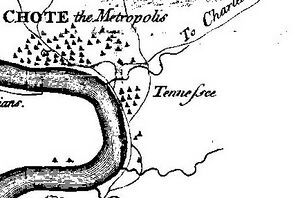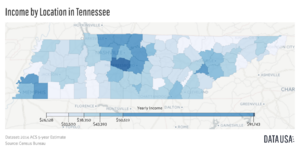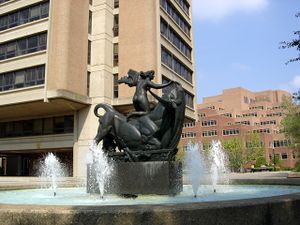تنسي
Tennessee
| |
|---|---|
| State of Tennessee | |
| الكنية: The Volunteer State[1] | |
| الشعار: Agriculture and Commerce | |
| النشيد: Nine songs | |
 خريطة الولايات المتحدة، موضح فيها Tennessee | |
| البلد | الولايات المتحدة |
| قبل الولائية | Southwest Territory |
| انضمت للاتحاد | June 1, 1796 (16th) |
| العاصمة (وأكبر مدينة) | Nashville[2] |
| أكبر منطقة عمرانية | Nashville (combined and metro) Memphis (urban) |
| الحكومة | |
| • الحاكم | Bill Lee (R) |
| • نائب الحاكم | Randy McNally (R) |
| المجلس التشريعي | General Assembly |
| • المجلس العلوي | Senate |
| • المجلس السفلى | House of Representatives |
| القضاء | Tennessee Supreme Court |
| سناتورات الولايات المتحدة | Marsha Blackburn (R) Bill Hagerty (R) |
| وفد مجلس النواب | 7 Republicans 2 Democrats (القائمة) |
| المساحة | |
| • الإجمالي | 42٬143 ميل² (109٬247 كم²) |
| • البر | 41٬217 ميل² (106٬846 كم²) |
| • الماء | 926 ميل² (2٬401 كم²) 2.2% |
| ترتيب المساحة | 36th |
| الأبعاد | |
| • الطول | 440 mi (710 km) |
| • العرض | 120 mi (195 km) |
| المنسوب | 900 ft (270 m) |
| أعلى منسوب | 6٬643 ft (2٬025 m) |
| أوطى منسوب | 178 ft (54 m) |
| التعداد (2020) | |
| • الإجمالي | 6٬916٬897[4] |
| • الترتيب | 16th |
| • الكثافة | 167٫8/sq mi (64٫8/km2) |
| • ترتيب الكثافة | 20th |
| • الدخل الأوسط للأسرة | $54٬833[5] |
| • ترتيب الدخل | 42nd |
| صفة المواطن | Tennessean Big Bender (archaic) Volunteer (historical significance) |
| اللغة | |
| • اللغة الرسمية | English |
| • اللغة المحكية | Language spoken at home[6] |
| منطقة التوقيت | |
| East Tennessee | UTC−05:00 (Eastern) |
| • الصيف (التوقيت الصيفي) | UTC−04:00 (EDT) |
| Middle and West | UTC−06:00 (Central) |
| • Summer (DST) | UTC−05:00 (CDT) |
| اختصار البريد | TN |
| ISO 3166 code | US-TN |
| الاختصار التقليدي | Tenn. |
| خط العرض | 34°59′ N to 36°41′ N |
| خط الطول | 81°39′ W to 90°19′ W |
| الموقع الإلكتروني | www |
تـِنـِسي ( Tennessee ؛ /ˌtɛnɪˈsiː/ (![]() استمع) TEN-ih-SEE, locally /ˈtɛnɪsi/ TEN-iss-ee),[7][8][9] officially the State of Tennessee، هي ولاية أمريكية حبيسة تقع في Southeastern region of the United States. Tennessee is the 36th-largest by area and the 15th-most populous of the 50 states. It is bordered by Kentucky to the north, Virginia to the northeast, North Carolina to the east, Georgia, Alabama, and Mississippi to the south, Arkansas to the southwest, and Missouri to the northwest. Tennessee is geographically, culturally, and legally divided into three Grand Divisions of East, Middle, and West Tennessee. Nashville is the state's capital and largest city, and anchors its largest metropolitan area. Other major cities include Memphis, Knoxville, Chattanooga, and Clarksville. Tennessee's population as of the 2020 United States census is approximately 6.9 million.[10]
استمع) TEN-ih-SEE, locally /ˈtɛnɪsi/ TEN-iss-ee),[7][8][9] officially the State of Tennessee، هي ولاية أمريكية حبيسة تقع في Southeastern region of the United States. Tennessee is the 36th-largest by area and the 15th-most populous of the 50 states. It is bordered by Kentucky to the north, Virginia to the northeast, North Carolina to the east, Georgia, Alabama, and Mississippi to the south, Arkansas to the southwest, and Missouri to the northwest. Tennessee is geographically, culturally, and legally divided into three Grand Divisions of East, Middle, and West Tennessee. Nashville is the state's capital and largest city, and anchors its largest metropolitan area. Other major cities include Memphis, Knoxville, Chattanooga, and Clarksville. Tennessee's population as of the 2020 United States census is approximately 6.9 million.[10]
Tennessee is rooted in the Watauga Association, a 1772 frontier pact generally regarded as the first constitutional government west of the Appalachian Mountains.[11] Its name derives from "Tanasi", a Cherokee town in the eastern part of the state that existed before the first European American settlement.[12] Tennessee was initially part of North Carolina, and later the Southwest Territory, before its admission to the Union as the 16th state on June 1, 1796. It earned the nickname "The Volunteer State" early in its history due to a strong tradition of military service.[13] A slave state until the American Civil War, Tennessee was politically divided, with its western and middle parts supporting the Confederacy and the eastern region harboring pro-Union sentiment. As a result, Tennessee was the last state to secede and the first readmitted to the Union after the war.[14]
During the 20th century, Tennessee transitioned from a predominantly agrarian society to a more diversified economy. This was aided in part by massive federal investment in the Tennessee Valley Authority (TVA) and the city of Oak Ridge, which was established during World War II to house the Manhattan Project's uranium enrichment facilities for the construction of the world's first atomic bombs. After the war, the Oak Ridge National Laboratory became a key center of scientific research. In 2016, the element tennessine was named for the state, largely in recognition of the roles played by Oak Ridge, Vanderbilt University, and the University of Tennessee in its discovery.[15] Tennessee has also played a major role in the development of many forms of popular music, including country, blues, rock and roll, soul, and gospel.
Tennessee has diverse terrain and landforms, and from east to west, contains a mix of cultural features characteristic of Appalachia, the Upland South, and the Deep South. The Blue Ridge Mountains along the eastern border reach some of the highest elevations in eastern North America, and the Cumberland Plateau contains many scenic valleys and waterfalls. The central part of the state is marked by cavernous bedrock and irregular rolling hills, and level, fertile plains define West Tennessee. The state is twice bisected by the Tennessee River, and the Mississippi River forms its western border. Its economy is dominated by the health care, music, finance, automotive, chemical, electronics, and tourism sectors, and cattle, soybeans, corn, poultry, and cotton are its primary agricultural products.[16] The Great Smoky Mountains National Park, the nation's most visited national park, is in eastern Tennessee.[17]
أصل الاسم
يعود اسم ولاية تينيسي إلى القبطان المستكشف الإسباني خوان باردو عندما مر هو ورجاله على قرية بها أمريكين أصليين تسمى "تاناسكوي" عام 1567، حينما ترحل براً من كارولينا الجنوبية. بعدها واجه المستوطنون الأوروبيون مدينة تسمى "تاناسي" التي تمثل بلدة مونرو الآن. تلك المدنية كانت تقع على نهر يحمل نفس الاسم (الذي يسمى نهر تينيسي الصغير الآن).[ب] Recent research suggests that the Cherokees adapted the name from the Yuchi word Tana-tsee-dgee, meaning "brother-waters-place" or "where-the-waters-meet".[19][20][21] The modern spelling, Tennessee, is attributed to Governor James Glen of South Carolina, who used this spelling in his official correspondence during the 1750s. In 1788, North Carolina created "Tennessee County", and in 1796, a constitutional convention, organizing the new state out of the Southwest Territory, adopted "Tennessee" as the state's name.[22]
التاريخ
التاريخ المبكر
لعل أقدم الجماعات البشرية المعروفة التي سكنت ولاية تنيسي هي الجماعات التي تعرف باسم: بناة الهضاب، علمًا بأنه يحتمل أن يكون الهنود الحمر قد سكنوا تلك المنطقة قبل حوالي 8,000 سنة على الأقل. وقد استقر بناة الهضاب في هذه المنطقة قبل حوالي 1,000سنة. كانت قبائل الهنود الحمر من الشيروكي، والتشيكماجوا والتشيكاساوا تقيم في تلك المنطقة لدى وصول أول المكتشفين من البيض.
وقد دخل المكتشفون الأسبان تلك المنطقة خلال القرن السادس عشر الميلادي. ووصل كل من الإنجليز والفرنسيين إلى تلك المنطقة في القرن السابع عشر. واستولت بريطانيا على السلطة كاملة عام 1763م. وقد أصبحت ولاية تنيسي الولاية السادسة عشرة عام 1796م حيث انضمت إلى الاتحاد. وبعد أن بدأت الحرب الأهلية بشهرين عام 1861م، كانت آخر ولاية تنسحب من الاتحاد. ثم قُبلت كأول ولاية تعود للاتحاد في 24 يوليو عام 1866م.
وبعد أن بدأت الحرب الأهلية بشهرين عام 1861م، كانت آخر ولاية تنسحب من الاتحاد. ثم قُبلت كأول ولاية تعود للاتحاد في 24 يوليو عام 1866م.
وقد أدين مدرس ثانوي في مدارس الولاية عام 1925م ـ واسمه جون توماس سكوبس ـ لمخالفته قانون الولاية الذي يقضي بمنع تدريس نظرية داروين في النشوء والارتقاء. وقد أثارت محاكمة هذا المدرس خلافًا وطنيًا. أسست الحكومة الاتحادية (الفيدرالية) لولاية تنيسي عام 1933م، ما يسمى بـسلطة وادي تنيسي للمحافظة على مصادر وادي نهر تنيسي وتطويرها.
شهدت ناشفيل نموًا وازدهارًا ملحوظين في صناعة أدوات الموسيقى في منتصف القرن العشرين، وقد اغتيل مارتن لوثر كينج الأصغر ـ أحد قادة الحقوق المدنية ـ في مدينة ممفيس بولاية تنيسي في 4 إبريل عام 1968م. تم ربط نهر تنيسي بخليج المكسيك عام 1985م وذلك ضمن مشروع الممر المائي المسمى: تنيسي ـ تومبيجبي.
جغرافيا
تجاور ولاية تينيسي ثمانية ولايات أخرى. من الشمال كنتاكي وفيرجينيا، ومن الشرق كارولينا الشمالية، ومن الجنوب ولاية جورجيا، وألاباما، وميسيسيبي، ومن الغرب أركنسا وميزوري.
تقع عدة سلاسل جبال على الجانب الشرقي للولاية. ويمتد واد، ومنطقة تلال خصبة على الجانب الغربي للجبال عبر منطقة الهضبة التي تحتوي على قمم مسطحة وأودية على شكل العدد 7. يقع حوض خصب كبير في وسط الولاية. ويحيط بالولاية أيضًا سهل مرتفع. ويعتبر الجزء الغربي من الولاية والواقع ما بين نهر تنيسي ونهر المسيسيبي، جزءًا مهمًا من أراضي الولايات المتحدة الأمريكية التي تعرف بـسهل الساحل الخليجي. ويشكل هذا السهل في ولاية تنيسي شريحة من التلال في الجهة الشرقية، وتلالاً منخفضة الانحدار وأودية عريضة في الوسط، وسهلاً ضيقًا في الجهة الغربية. تقع ولاية تينيسي بين ثمان ولايات أمريكية، تحدها من الشمال ولاية كنتاكي وولاية فيرجينيا، ومن الجنوب ولاية جورجيا والاباما وميسيسيبي، ومن الشرق ولاية كارولينا الشمالية، أما من الغرب فتحدها ولاية اركنساس وولاية ميسوري. مدينة ناشفيل Nashville هي عاصمة الولاية. تبلغ مساحتها 106752 كيلو متر مربع تحتل بها المركز السادس والثلاثون بين ولايات أمريكا المختلفة ويبلغ عدد المقاطعات بها 95 مقاطعة وبها 54 متنزه وتمثل نسبة المياه بها 2.2 % من إجمالي المساحة.
تقع ولاية تينيسي بين ثمان ولايات أمريكية، تحدها من الشمال ولاية كنتاكي وولاية فيرجينيا، ومن الجنوب ولاية جورجيا والاباما وميسيسيبي، ومن الشرق ولاية كارولينا الشمالية، أما من الغرب فتحدها ولاية اركنساس وولاية ميسوري. مدينة ناشفيل Nashville هي عاصمة الولاية. تبلغ مساحتها 106752 كيلو متر مربع تحتل بها المركز السادس والثلاثون بين ولايات أمريكا المختلفة ويبلغ عدد المقاطعات بها 95 مقاطعة وبها 54 متنزه وتمثل نسبة المياه بها 2.2 % من إجمالي المساحة.
Topography

The southwestern Blue Ridge Mountains lie within Tennessee's eastern edge, and are divided into several subranges, namely the Great Smoky Mountains, Bald Mountains, Unicoi Mountains, Unaka Mountains, and Iron Mountains. These mountains, which average 5،000 أقدام (1،500 m) above sea level in Tennessee, contain some of the highest elevations in eastern North America. The state's border with North Carolina roughly follows the highest peaks of this range, including Clingmans Dome. Most of the Blue Ridge area is protected by the Cherokee National Forest, the Great Smoky Mountains National Park, and several federal wilderness areas and state parks.[23] The Appalachian Trail roughly follows the North Carolina state line before shifting westward into Tennessee.[24]
شرق تينيسي

وسط تينيسي
Hydrology
Tennessee is drained by three major rivers, the Tennessee, Cumberland, and Mississippi. The Tennessee River begins at the juncture of the Holston and French Broad rivers in Knoxville, flows southwest to Chattanooga, and exits into Alabama before reemerging in the western part of the state and flowing north into Kentucky.[25] Its major tributaries include the Clinch, Little Tennessee, Hiwassee, Sequatchie, Elk, Beech, Buffalo, Duck, and Big Sandy rivers.[25] The Cumberland River flows through the north-central part of the state, emerging in the northeastern Highland Rim, passing through Nashville, turning northwest to Clarksville, and entering Kentucky east of the Tennessee River.[26] Its principal branches in Tennessee are the Obey, Caney Fork, Stones, Harpeth, and Red rivers.[26] The Mississippi River drains nearly all of West Tennessee.[27] Its tributaries are the Obion, Forked Deer, Hatchie, Loosahatchie, and Wolf rivers.[27] The Tennessee Valley Authority (TVA) and the U.S. Army Corps of Engineers operate many hydroelectric dams on the Tennessee and Cumberland rivers and their tributaries, which form large reservoirs throughout the state.[28]
About half the state's land area is in the Tennessee Valley drainage basin of the Tennessee River.[25] The Cumberland River basin covers the northern half of Middle Tennessee and a small portion of East Tennessee.[26] A small part of north-central Tennessee is in the Green River watershed.[29] All three of these basins are tributaries of the Ohio River watershed. Most of West Tennessee is in the Lower Mississippi River watershed.[27] The entirety of the state is in the Mississippi River watershed, except for a small sliver near the southeastern corner traversed by the Conasauga River, which is part of the Mobile Bay watershed.[30]
Ecology
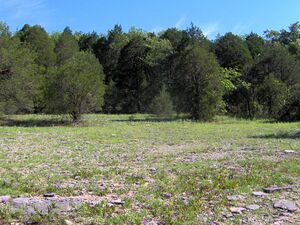
Tennessee is within a temperate deciduous forest biome commonly known as the Eastern Deciduous Forest.[31] It has eight ecoregions: the Blue Ridge, Ridge and Valley, Central Appalachian, Southwestern Appalachian, Interior Low Plateaus, Southeastern Plains, Mississippi Valley Loess Plains, and Mississippi Alluvial Plain regions.[32] Tennessee is the most biodiverse inland state,[33] the Great Smoky Mountains National Park is the most biodiverse national park,[34][35] and the Duck River is the most biologically diverse waterway in North America.[36] The Nashville Basin is renowned for its diversity of flora and fauna.[37] Tennessee is home to 340 species of birds, 325 freshwater fish species, 89 mammals, 77 amphibians, and 61 reptiles.[34]
Forests cover about 52% of Tennessee's land area, with oak–hickory the dominant type.[38] Appalachian oak–pine and cove hardwood forests are found in the Blue Ridge Mountains and Cumberland Plateau, and bottomland hardwood forests are common throughout the Gulf Coastal Plain.[39] Pine forests are also found throughout the state.[39] The Southern Appalachian spruce–fir forest in the highest elevations of the Blue Ridge Mountains is considered the second-most endangered ecosystem in the country.[40] Some of the last remaining large American chestnut trees grow in the Nashville Basin and are being used to help breed blight-resistant trees.[41] Middle Tennessee is home to many unusual and rare ecosystems known as cedar glades, which occur in areas with shallow limestone bedrock that is largely barren of overlying soil and contain many endemic plant species.[42]
Common mammals found throughout Tennessee include white-tailed deer, red and gray foxes, coyotes, raccoons, opossums, wild turkeys, rabbits, and squirrels. Black bears are found in the Blue Ridge Mountains and on the Cumberland Plateau. Tennessee has the third-highest number of amphibian species, with the Great Smoky Mountains home to the most salamander species in the world.[43] The state ranks second in the nation for the diversity of its freshwater fish species.[44]
الطقس
| Monthly Normal High and Low Temperatures For Various Tennessee Cities (F)[45] | ||||||||||||
| City | Jan | Feb | Mar | Apr | May | Jun | Jul | Aug | Sep | Oct | Nov | Dec |
|---|---|---|---|---|---|---|---|---|---|---|---|---|
| Chattanooga | 49/30 | 54/33 | 63/40 | 72/47 | 79/56 | 86/65 | 90/69 | 89/68 | 82/62 | 72/48 | 61/40 | 52/33 |
| Knoxville | 46/29 | 52/32 | 60/39 | 69/47 | 76/56 | 84/64 | 87/68 | 86/67 | 81/61 | 70/48 | 59/39 | 50/32 |
| Memphis | 49/31 | 54/36 | 63/44 | 72/52 | 80/61 | 88/69 | 92/73 | 91/71 | 85/64 | 75/52 | 62/43 | 52/34 |
| Nashville | 46/28 | 51/31 | 61/39 | 70/47 | 78/57 | 85/65 | 89/70 | 88/68 | 82/61 | 71/49 | 59/40 | 49/32 |
| Oak Ridge | 46/27 | 52/30 | 61/37 | 70/44 | 78/53 | 85/62 | 88/66 | 87/65 | 81/59 | 71/46 | 59/36 | 49/30 |
السكان
حسب إحصائيات عام 2000 يبلغ عدد السكان بولاية تينيسي 5,689,283 نسمة وتأتي في المرتبة السادسة عشر من حيث عدد السكان مقارنة بالولايات الأمريكية الأخرى، ويبلغ نسبة عدد السكان البيض 80.2% ويأتي السكان ذوي البشرة السوداء بنسبة 16.4% من نسبة عدد السكان، واللاتينيون نسبتهم 2.2% والأمريكان الأصليون تبلغ نسبتهم 0.3 %، والأسيويون نسبتهم 1% ويأتي المختلطون بنسبة 1.1%. يبلغ إجمالي عدد السكان العرب المقيمين بولاية تينيسي 12,882 نسمة منهم 3194 لبناني و773 سوري وعدد السكان المصريين 1,569 مصري.
| التعداد تاريخياً | |||
|---|---|---|---|
| الإحصاء | التعداد | %± | |
| 1790 | 35٬691 | ||
| 1810 | 261٬727 | ||
| 1820 | 422٬823 | 61.6% | |
| 1830 | 681٬904 | 61.3% | |
| 1840 | 829٬210 | 21.6% | |
| 1870 | 1٬258٬520 | ||
| 1880 | 1٬542٬359 | 22.6% | |
| 1900 | 2٬020٬616 | ||
| 1910 | 2٬184٬789 | 8.1% | |
| 1920 | 2٬337٬885 | 7.0% | |
| 1930 | 2٬616٬556 | 11.9% | |
| 1940 | 2٬915٬841 | 11.4% | |
| 1950 | 3٬291٬718 | 12.9% | |
| 1960 | 3٬567٬089 | 8.4% | |
| 1970 | 3٬923٬687 | 10.0% | |
| 1980 | 4٬591٬120 | 17.0% | |
| 1990 | 4٬877٬185 | 6.2% | |
| 2000 | 5٬689٬283 | 16.7% | |
| تقديري 2007 | 6٬156٬719 | 8.2% | |
القانون والحكومة

المدن والبلدات الهامة
|
Major cities Secondary cities |
|
الاقتصاد
تعد الصناعة أهم نشاط اقتصادي لولاية تنيسي التي تعتبر أحد المنتجين الرئيسيين للمواد الكيميائية. وإلى جانب ذلك، فهي تنتج الصناعات الغذائية، ومختلف أنواع العصائر والمشروبات والآلات، والسيارات المختلفة. وتتضمن الصناعات الخدمية المهمة فيها كلاً من: التعليم، والعناية الصحية، والسياحة، والتجارة. وتعتبر مدينة ممفيس أحد المراكز الوطنية الرئيسية لتجارة الجملة. وتشتهر الولاية بأنها أحد أهم مراكز الصحة في العالم اذ يكثر بها عدد المستشفيات ذات المستوى العالمية والتي يقصدها المرضي من شتي انحاء العالم وبها اكثر من 250 مركز صحي عالمي. وقد حصلت مدينة ناشفيل وخاصة شركة هوسبيتال كوربوراشين علي المركز الاول في عام 2006 كمركز صحي علي مستوي العالم مما يدر دخل 18.3 بليون دولار سنويا علي اقتصاد الولاية كما تلعب الموسيقي دور جيد في الاقتصاد، وأيضا تلعب صناعة السيارات دور مميز في اقتصاد الولاية.
Industry

الأعمال

Energy and mineral production
Tourism
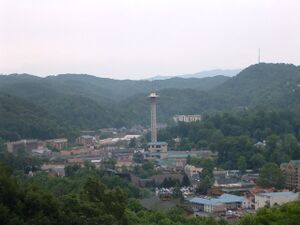
Tennessee is the 11th-most visited state in the nation,[47] receiving a record of 126 million tourists in 2019.[48][49][50] Its top tourist attraction is the Great Smoky Mountains National Park, the most visited national park in the U.S., with more than 14 million visitors annually.[46] The park anchors a large tourism industry based primarily in nearby Gatlinburg and Pigeon Forge, which includes Dollywood, the most visited ticketed attraction in Tennessee.[51] Attractions related to Tennessee's musical heritage are spread throughout the state.[52][53] Other top attractions include the Tennessee State Museum and Parthenon in Nashville; the National Civil Rights Museum and Graceland in Memphis; Lookout Mountain, the Chattanooga Choo-Choo Hotel, Ruby Falls, and the Tennessee Aquarium in Chattanooga; the American Museum of Science and Energy in Oak Ridge, the Bristol Motor Speedway, Jack Daniel's Distillery in Lynchburg, and the Hiwassee and Ocoee rivers in Polk County.[51]
الفقر
تبلغ نسبة الفقراء بولاية تينيسي 14.4 % في عامي 2002- 2003 منخفضة عن عامي 2001 -2002 اذ بلغت النسبة 14.5 %، وتأتي ولاية تينيسي في المرتبة الثالثة والأربعين بين الولايات الخمسين من حيث ترتيب معدل البطالة اذ يبلغ معدل البطالة 6 عام 2005، ونسبة الذين يمتلكون مساكن 71.6 % عام 2003 مرتفعة عن عام 1990 اذ بلغت 68.3 %. ويبلغ متوسط الدخل السنوي للفرد 30 دولار عام 2004 ارتفعت عن عام 1980 اذ بلغت 7.711دولار فقط.
التعليم
جامعات ولاية تينيسي
تتميز ولاية تينيسي بوجود العديد من الجامعات الحكومية والخاصة من أهمها: - جامعة ولاية تينيسي Tennessee State University في مدينة ناشفيل وأنشأت عام 1912 وبها 430 كلية وقد تخرج منها 1630 طالب ويدرس بها 7118 طالب. - جامعة ممفيس University of Memphis أنشأت عام 1912 وبها 90 كلية ويدرس بها 15000 طالب في حين تخرج منها 5000 طالب العام الماضي.
السياسة
| السنة | الجمهوري / هويگ | الديمقراطي | حزب ثالث | |||
|---|---|---|---|---|---|---|
| رقم. | % | رقم. | % | رقم. | % | |
| 2020 | 1,852,475 | 60٫66% | 1,143,711 | 37٫45% | 57,665 | 1٫89% |
| 2016 | 1,522,925 | 60٫72% | 870,695 | 34٫72% | 114,407 | 4٫56% |
| 2012 | 1,462,330 | 59٫42% | 960,709 | 39٫04% | 37,865 | 1٫54% |
| 2008 | 1,479,178 | 56٫85% | 1,087,437 | 41٫79% | 35,367 | 1٫36% |
| 2004 | 1,383,336 | 56٫81% | 1,035,160 | 42٫51% | 16,453 | 0٫68% |
| 2000 | 1,061,949 | 51٫15% | 981,720 | 47٫28% | 32,512 | 1٫57% |
| 1996 | 863,530 | 45٫59% | 909,146 | 48�00% | 121,429 | 6٫41% |
| 1992 | 841,300 | 42٫43% | 933,521 | 47٫08% | 207,817 | 10٫48% |
| 1988 | 947,233 | 57٫89% | 679,794 | 41٫55% | 9,223 | 0٫56% |
| 1984 | 990,212 | 57٫84% | 711,714 | 41٫57% | 10,067 | 0٫59% |
| 1980 | 787,761 | 48٫70% | 783,051 | 48٫41% | 46,804 | 2٫89% |
| 1976 | 633,969 | 42٫94% | 825,879 | 55٫94% | 16,498 | 1٫12% |
| 1972 | 813,147 | 67٫70% | 357,293 | 29٫75% | 30,742 | 2٫56% |
| 1968 | 472,592 | 37٫85% | 351,233 | 28٫13% | 424,792 | 34٫02% |
| 1964 | 508,965 | 44٫49% | 634,947 | 55٫50% | 34 | 0�00% |
| 1960 | 556,577 | 52٫92% | 481,453 | 45٫77% | 13,762 | 1٫31% |
| 1956 | 462,288 | 49٫21% | 456,507 | 48٫60% | 20,609 | 2٫19% |
| 1952 | 446,147 | 49٫99% | 443,710 | 49٫71% | 2,696 | 0٫30% |
| 1948 | 202,914 | 36٫87% | 270,402 | 49٫14% | 76,967 | 13٫99% |
| 1944 | 200,311 | 39٫22% | 308,707 | 60٫45% | 1,674 | 0٫33% |
| 1940 | 169,153 | 32٫35% | 351,601 | 67٫25% | 2,069 | 0٫40% |
| 1936 | 146,520 | 30٫81% | 327,083 | 68٫78% | 1,935 | 0٫41% |
| 1932 | 126,752 | 32٫48% | 259,473 | 66٫49% | 4,031 | 1٫03% |
| 1928 | 195,388 | 53٫76% | 167,343 | 46٫04% | 742 | 0٫20% |
| 1924 | 130,728 | 43٫54% | 158,682 | 52٫86% | 10,810 | 3٫60% |
| 1920 | 219,829 | 51٫29% | 206,558 | 48٫19% | 2,239 | 0٫52% |
| 1916 | 116,223 | 42٫70% | 153,280 | 56٫31% | 2,687 | 0٫99% |
| 1912 | 60,475 | 24�00% | 133,021 | 52٫80% | 58,437 | 23٫20% |
| 1908 | 117,977 | 45٫87% | 135,608 | 52٫73% | 3,595 | 1٫40% |
| 1904 | 105,363 | 43٫40% | 131,653 | 54٫23% | 5,734 | 2٫36% |
| 1900 | 123,108 | 44٫95% | 145,240 | 53٫03% | 5,512 | 2٫01% |
| 1896 | 148,683 | 46٫33% | 167,168 | 52٫09% | 5,052 | 1٫57% |
| 1892 | 100,537 | 37٫83% | 136,468 | 51٫36% | 28,727 | 10٫81% |
| 1888 | 138,978 | 45٫76% | 158,699 | 52٫26% | 6,017 | 1٫98% |
| 1884 | 124,101 | 47٫74% | 133,770 | 51٫45% | 2,107 | 0٫81% |
| 1880 | 107,677 | 44٫26% | 129,569 | 53٫26% | 6,017 | 2٫47% |
| 1876 | 89,566 | 40٫21% | 133,177 | 59٫79% | 0 | 0�00% |
| 1872 | 85,655 | 47٫84% | 93,391 | 52٫16% | 0 | 0�00% |
| 1868 | 56,628 | 68٫43% | 26,129 | 31٫57% | 0 | 0�00% |
| 1864 | 30,000 | 85٫71% | 5,000 | 14٫29% | 0 | 0�00% |
| 1860 | 0 | 0�00% | 11,281 | 7٫72% | 134,825 | 92٫28% |
| 1856 | 0 | 0�00% | 69,704 | 52٫18% | 63,878 | 47٫82% |
| 1852 | 58,586 | 50٫73% | 56,900 | 49٫27% | 0 | 0�00% |
| 1848 | 64,321 | 52٫52% | 58,142 | 47٫48% | 0 | 0�00% |
| 1844 | 60,040 | 50٫05% | 59,917 | 49٫95% | 0 | 0�00% |
| 1840 | 60,194 | 55٫66% | 47,951 | 44٫34% | 0 | 0�00% |
| 1836 | 36,027 | 57٫92% | 26,170 | 42٫08% | 0 | 0�00% |
Tennessee's politics are currently dominated by the Republican Party.[56][57] Republicans currently hold both of the state's U.S. Senate seats, 8 out of 9 Congressional seats, 75 out of 99 state House seats, and 27 out of 33 state Senate seats. Democratic strength is largely concentrated in Nashville, Memphis, and parts of Knoxville, Chattanooga, and Clarksville. Several suburban areas of Nashville and Memphis also contain significant Democratic minorities. Tennessee is one of thirteen states which holds its presidential primaries on Super Tuesday.[58] Tennessee does not require voters to declare a party affiliation when registering. The state is one of eight states which require voters to present a form of photo identification.[59]

Between the end of the Civil War and the mid-20th century, Tennessee was part of the Democratic Solid South, but had the largest Republican minority of any former Confederate state.[60] During this time, East Tennessee was heavily Republican and the western two-thirds mostly voted Democratic, with the latter dominating the state.[61] This division was related to the state's pattern of Unionist and Confederate loyalism during the Civil War.[61] Tennessee's 1st and 2nd congressional districts, based in the Tri-Cities and Knoxville, respectively, are among the few historically Republican districts in the South. The first has been in Republican hands continuously since 1881, and Republicans or their antecedents have held it for all but four years since 1859.[62] The second has been held continuously by Republicans or their antecedents since 1855.[63]
During Reconstruction, freedmen and former free blacks were granted the right to vote; most joined the Republican Party. Numerous African Americans were elected to local offices, and some to state office. Following Reconstruction, Tennessee continued to have competitive party politics, but in the 1880s, the White-dominated state government passed Jim Crow laws, one of which imposed a poll tax requirement for voter registration. These served to disenfranchise most African Americans, and their power in state and local politics was markedly reduced. After the disenfranchisement of blacks, the Republican Party became a primarily white sectional party supported mostly in East Tennessee. In the early 1900s, the state legislature approved legislation allowing cities to adopt a commission form of government based on at-large voting as a means to limit African American political participation.[64] Not until after passage of the Voting Rights Act of 1965 were African Americans able to regain their full voting rights.[65]
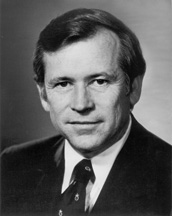
Between the end of Reconstruction and the mid-20th century, Tennessee voted consistently Democratic in Presidential elections, except in two nationwide Republican landslides in the 1920s. Tennesseans narrowly supported Warren G. Harding over Ohio Governor James Cox in 1920,[67] and more decisively voted for Herbert Hoover over New York Governor Al Smith in 1928.[68] During the first half of the 20th century, state politics were dominated by the Democratic Crump machine in Memphis.[69] For most of the second half of the 20th century, Tennessee was a swing state in presidential elections.[70] During this time, Democratic presidential nominees from Southern states, including Lyndon B. Johnson, Jimmy Carter, and Bill Clinton, tended to fare better in Tennessee than their Northern counterparts, especially among split-ticket voters outside the metropolitan areas. In the 1950s, Tennessee twice voted for Republican Dwight D. Eisenhower, former Allied Commander of the Armed Forces during World War II.[71] Howard Baker, first elected in 1966, became the first Republican U.S. Senator from Tennessee since Reconstruction.[72] The Republican Southern strategy did not have as much of an effect in Tennessee as in most Southern states, but the elections of Winfield Dunn as governor and Bill Brock to the U.S. Senate in 1970 further helped make the GOP competitive among Whites in statewide elections.[73] In the 2000 presidential election, Vice President Al Gore, who had previously served as a Democratic U.S. Senator from Tennessee, failed to carry his home state, an unusual occurrence but indicative of strengthening Republican support.[74]
Beginning in the early 21st century, Tennessee transitioned into a solid Republican state, primarily due to rural white voters who have rejected the increasing liberalism of the Democratic Party.[75][76] In 2004, Republican President George W. Bush increased his margin of victory in the state from a 4% to a 14% margin in 2000.[77][78] In 2007, Ron Ramsey became the first Republican Speaker of the State Senate since Reconstruction,[79] and the following year the Republicans gained control of both houses of the state legislature for the first time since Reconstruction.[80] Voters, however, continued to elect moderate Republicans, such as centrists Bill Haslam and Lamar Alexander, until the late 2010s with the rise of Trumpism in the GOP at a nationwide scale.[81] Since 2016, Tennessee has been the most populous state to vote Republican by more than 60% in presidential elections,[82] and in 2020 voted Republican by the largest margin of any state in terms of number of votes.[83]
الرياضة
Tennessee is home to four major professional sports franchises:[84] the Tennessee Titans have played in the National Football League (NFL) since 1997,[85] the Nashville Predators have played in the National Hockey League (NHL) since 1998,[86] the Memphis Grizzlies have played in the National Basketball Association (NBA) since 2001,[87] and Nashville SC has played in Major League Soccer (MLS) since 2020.[88]
رموز الولاية
يبلغ نسبة عدد المسيحيون بولاية تينيسي 82% من نسبة عدد السكان مقسمين (إلى 39% ينتمون إلى طائفة البابثيست، و10% يمثلوا طائفة الميثوديست، 6% من مسيحيو الكنيسة، 3% من البريسبيتريان، و6% من الرومان الكاثوليك، و18% من المسيحيين الآخرين)، ونسبة 3% من السكان ينتمون إلى الديانات الأخرى، و9% عديمي الديانة أو ملحدون.
State symbols include:
- State bird - "Mockingbird"
- State game bird - "Bobwhite Quail"
- State wild animal - "Raccoon"
- State sport fish - "Largemouth Bass"
- State commercial fish - "Channel Catfish"
- State horse - "Tennessee Walking Horse"
- State insect - "Lightning Bug and the Lady Bug"
- State flower - "Purple Iris"
- State wild flower - "Passion Flower"
- State tree - "Tulip Poplar"
- State fruit - "Tomato"
انظر أيضا
- Outline of Tennessee – organized list of topics about Tennessee
- Index of Tennessee-related articles
- List of people from Tennessee
- USS Tennessee، 6 سفن
ملاحظات
- ^ أ ب Elevation adjusted to North American Vertical Datum of 1988
- ^ Recent research suggests that the town Pardo recorded was at the confluence of the Pigeon River and the French Broad River, near modern-day Newport, Tennessee.[18]
المصادر
- ^ "Tennessee adopts 'The Volunteer State' as official nickname". WTVF-TV. Nashville. Associated Press. February 10, 2020. Retrieved October 5, 2020.
- ^ خطأ استشهاد: وسم
<ref>غير صحيح؛ لا نص تم توفيره للمراجع المسماةcommercialappeal0517 - ^ أ ب "Elevations and Distances in the United States". United States Geological Survey. 2001. Archived from the original on October 15, 2011. Retrieved October 24, 2011.
- ^ "QuickFacts Tennessee; United States". quickfacts.census.gov. United States Census Bureau, Population Division. February 6, 2019. Archived from the original on February 2, 2019. Retrieved February 6, 2019.
- ^ "Median Annual Household Income". The Henry J. Kaiser Family Foundation. 2017. Archived from the original on December 20, 2016. Retrieved April 16, 2019.
- ^ "Languages in Tennessee (State)". Statistical Atlas. Archived from the original on April 28, 2019. Retrieved August 6, 2019.
- ^ "Definition of 'Tennessee'". Webster's New World College Dictionary (4th ed.). Houghton Mifflin Harcourt. 2010. Archived from the original on July 3, 2018. Retrieved July 2, 2018 – via Collins English Dictionary.
- ^ "Tennessee". Oxford Advanced American Dictionary. Oxford University Press. 2018. Archived from the original on July 3, 2018. Retrieved July 2, 2018.
- ^ Jones, Daniel (2011), Tennessee (18 ed.), Cambridge University Press, p. 488, ISBN 978-0-521-15255-6, https://books.google.com/books?id=KQXL_uRxUN4C&pg=PA488
- ^ "City and Town Population Totals: 2010–2019". 2019 Population Estimates. United States Census Bureau, Population Division. Retrieved June 16, 2020.
- ^ Finger 2001, pp. 46–47.
- ^ Bales, Stephen Lyn (2007). Natural Histories: Stories from the Tennessee Valley. Knoxville, TN: University of Tennessee Press. pp. 85–86. ISBN 978-1572335615 – via Google Books.
- ^ McCullough, Clay (April 26, 2018). "Why Tennessee is Called the Volunteer State". Culture Trip. Retrieved January 28, 2021.
- ^ "Tennessee's Civil War Heritage Trail" (PDF). The University of Southern Mississippi. Archived from the original (PDF) on March 26, 2010. Retrieved November 25, 2009.
- ^ "IUPAC Announces the Names of the Elements 113, 115, 117, and 118". International Union of Pure and Applied Chemistry. November 30, 2016. Archived from the original on September 23, 2018. Retrieved July 2, 2019.
- ^ Bertone, Rachel (November 20, 2013). "Tennessee's Top Five". Tennessee Home & Farm. Tennessee Farm Bureau.
- ^ "Great Smoky Mountains National Park". National Park Service. Archived from the original on December 2, 2009. Retrieved November 25, 2009.
- ^ Hudson, Charles M. (2005). The Juan Pardo Expeditions: Explorations of the Carolinas and Tennessee, 1566–1568. Tuscaloosa, AL: University of Alabama Press. pp. 36–40. ISBN 9780817351908 – via Google Books.
- ^ McBride, Robert M. (Winter 1971). "Editor's Page". Tennessee Historical Quarterly. 30 (4): 344. JSTOR 42623257.
- ^ "Tennessee's Name Dates Back To 1567 Spanish Explorer Captain Juan Pardo". Tngenweb.org. January 1, 2005. Archived from the original on January 3, 2011. Retrieved July 31, 2010.
- ^ Hackett (Woktela), David. "Who Were the Mysterious Yuchi of Tennessee and the Southeast?". Yuchi.org. Retrieved January 23, 2022.
- ^ Langsdon 2000, p. 23.
- ^ "Federal Lands and Indian Reservations - Tennessee" (PDF). Washington, D.C.: United States Department of the Interior. 2003. Retrieved June 20, 2021 – via University of Texas Libraries.
- ^ "Appalachian Trail Map" (PDF). nps.gov. Washington, D.C.: National Park Service. Retrieved July 17, 2021.
- ^ أ ب ت "Tennessee Valley Area: pictorial map". U.S. Government Printing Office. 1939. Retrieved June 23, 2020 – via Library of Congress.
- ^ أ ب ت "Cumberland River Basin & Barren River Watershed". tn.gov. Tennessee Department of Environment and Conservation. Archived from the original on August 7, 2020. Retrieved June 23, 2020.
- ^ أ ب ت "Mississippi River Basin". tn.gov. Tennessee Department of Environment and Conservation. Archived from the original on June 23, 2020. Retrieved June 23, 2020.
- ^ Corlew, Folmsbee & Mitchell 1981, pp. 12–13.
- ^ "Barren River Watershed". tn.gov. Tennessee Department of Environment and Conservation. Archived from the original on August 7, 2020. Retrieved June 23, 2020.
- ^ Carey, Bill (October 2017). "Conasauga River nearly became important in Tennessee history". Tennessee Magazine. Retrieved June 23, 2020.
- ^ Dyer, James M. (April 2006). "Revisiting the Deciduous Forests of Eastern North America". BioScience. Oxford University Press. 56 (4): 341–352. doi:10.1641/0006-3568(2006)56[341:RTDFOE]2.0.CO;2.
- ^ Slayton, Heather; Johnson, Trish; Greene, Rachel; Hill, Jeff; Hiltibran, Christel (December 2020). Tennessee Forest Action Plan 2020-2030. Tennessee Department of Agriculture. pp. 14–19. Archived from the original. You must specify the date the archive was made using the
|archivedate=parameter. https://www.tn.gov/content/dam/tn/agriculture/documents/forestry/2020-tn-fap/2020-TN-FAP.pdf. Retrieved on May 14, 2020. - ^ Amacker, Todd (August 9, 2018). "Tennessee—The Most Biodiverse Inland State". Fisheries. Bethesda, MD: American Fisheries Society. 43 (8): 369–373. doi:10.1002/fsh.10124. S2CID 91480878.
- ^ أ ب Tennessee Wildlife Resources Agency; National Wildlife Federation; The Nature Conservancy. "Climate Change and Potential Impacts to Wildlife in Tennessee" (PDF). tn.gov. Nashville. Retrieved May 14, 2021.
- ^ WATE Staff (January 12, 2021). "GSMNP reaches biodiversity milestone of 20,000 species". Knoxville, TN: WATE-TV. Retrieved May 14, 2021.
- ^ Sohn, Pam (January 27, 2010). "Tennessee's Duck River in National Geographic". Chattanooga Times Free Press. Retrieved May 14, 2021.
- ^ Sarah (December 15, 2020). "7 Dangerous Animals in Tennessee: Deadliest Wildlife Guide". Journeying The Globe. Retrieved April 10, 2021.
- ^ Slayton et al. 2020, p. 3.
- ^ أ ب Hopper, George M.; Applegate, Hart; Dale, Greg; Winslow, Richard (February 1995). Forest Practice Guidelines for Tennessee. University of Tennessee Agricultural Extension Service. Archived from the original. You must specify the date the archive was made using the
|archivedate=parameter. https://extension.tennessee.edu/publications/Documents/pb1523.pdf. Retrieved on May 14, 2021. - ^ Moore, Molly (June 11, 2012). "Last Stand for the Southern Spruce-Fir?". The Appalachian Voice. Boone, North Carolina: Appalachian Voices. 2012 (3). Retrieved July 3, 2021.
- ^ "Tennessee Chestnut Project". tectn.org. Tennessee Environmental Council. Retrieved May 25, 2021.
- ^ Quarterman, Elsie (January 1950). "Ecology of Cedar Glades. I. Distribution of Glade Flora in Tennessee". Bulletin of the Torrey Botanical Club. New York: Torrey Botanical Society. 77 (1): 1–9. doi:10.2307/2482376. JSTOR 2482376.
- ^ "Amphibians". Great Smoky Mountains National Park. National Park Service. Retrieved May 14, 2021.
- ^ Stein, Bruce A. (April 2002). States of the Union: Ranking America's Biodiversity. NatureServe. Archived from the original. You must specify the date the archive was made using the
|archivedate=parameter. https://www.natureserve.org/sites/default/files/publications/files/stateofunions.pdf. Retrieved on May 14, 2021. - ^ [1]
- ^ أ ب "Visitation Numbers". National Park Service. Retrieved October 7, 2020.
- ^ Polland, Jennifer (October 30, 2014). "A Detailed Look At How Americans Travel Within The US". Business Insider. Retrieved April 18, 2021.
- ^ Vásquez Russell, Melanie (August 25, 2020). "Report: State, East TN counties travel, tourism industries saw record-breaking growth in 2019". Knoxville, TN: WATE-TV. Retrieved April 18, 2021.
- ^ 2019 Economic Impact of Travel on Tennessee. Tennessee Department of Tourist Development. August 2020. Archived from the original. You must specify the date the archive was made using the
|archivedate=parameter. https://industry.tnvacation.com/sites/industry/files/component/pod/2019%20Economic%20Impact.pdf. Retrieved on April 18, 2021. - ^ "Tourism in Tennessee Shattered Records with $23 Billion in Travel Spending and 126 Million Domestic Person Stays in 2019" (Press release). Nashville: Tennessee Department of Tourist Development. August 25, 2020. Retrieved April 18, 2021.
- ^ أ ب Kampis, Johnny. "Top Ten Places to Go in Tennessee". USA Today. Archived from the original on August 12, 2015. Retrieved August 18, 2015.
- ^ "14 Best Things to Do in Memphis". U.S. News & World Report. May 14, 2020. Retrieved June 4, 2020.
- ^ "21 Best Things to Do in Nashville". U.S. News & World Report. January 3, 2020. Retrieved June 4, 2020.
- ^ Leip, David. "Presidential General Election Results Comparison – Tennessee". US Election Atlas. Retrieved October 26, 2022.
- ^ Humanities, National Endowment for the (1864-11-18). "Chicago tribune. [volume] (Chicago, Ill.) 1864-1872, November 18, 1864, Image 2". ISSN 2572-9977. Retrieved 2021-12-05.
- ^ Doble, Rob (December 24, 2020). "Analysis: The polarization express". Tennessee Lookout. Retrieved May 28, 2021.
- ^ Clouse, Allie (November 6, 2020). "As Georgia becomes a blue wedge in the Deep South, Tennessee cleaves tighter to the GOP". Knoxville News-Sentinel. Retrieved May 28, 2021.
- ^ "Super Tuesday 2020". US Presidential Election News. Retrieved April 24, 2019.
- ^ "Voter Identification Requirements". ncsl.org. National Conference of State Legislatures. Retrieved May 25, 2021.
- ^ Langsdon 2000, p. x.
- ^ أ ب Hunt, Keel (2018). Crossing the Aisle: How Bipartisanship Brought Tennessee to the Twenty-First Century and Could Save America. Nashville: Vanderbilt University Press. pp. 22–23. ISBN 978-0-8265-2241-2 – via Google Books.
- ^ "Tennessee's 1st Congressional District". voteview.com. Los Angeles: UCLA Department of Political Science. Retrieved July 22, 2021.
- ^ "Tennessee's 2nd Congressional District". voteview.com. Los Angeles: UCLA Department of Political Science. Retrieved July 22, 2021.
- ^ قالب:Cite court
- ^ Lamon 1980, pp. 59–60.
- ^ Baldoni, John (July 8, 2014). "Howard Baker: Lessons From The 'Great Conciliator'". Forbes. Retrieved February 11, 2022.
- ^ Langsdon 2000, pp. 299–300.
- ^ Langsdon 2000, p. 314.
- ^ Biles, Roger (1986). Memphis In the Great Depression. Knoxville, TN: University of Tennessee Press. pp. 88–107. ISBN 978-1572331570.
- ^ Doble, Rob (December 24, 2020). "Analysis: The polarization express". Tennessee Lookout. Retrieved July 22, 2021.
- ^ Langsdon 2000, pp. 350–354.
- ^ Langsdon 2000, pp. 366–367.
- ^ Langsdon 2000, pp. 370–373.
- ^ Pérez-Peña, Richard (November 9, 2000). "Loss In Home State Leaves Gore Depending on Florida". The New York Times. p. B1. Archived from the original on July 10, 2012. Retrieved May 5, 2021.
- ^ Schelzig, Erik (August 5, 2019). "Battleground no longer: Here's the Almanac of American Politics' overview of Tennessee". The Tennessee Journal. Brentwood, Tennessee. Retrieved May 2, 2021.
- ^ Baker, Jackson (July 31, 2014). "How Tennessee Turned Red". Memphis Flyer. Retrieved May 2, 2021.
- ^ Dade, Corey (November 22, 2008). "Tennessee Resists Obama Wave". The Wall Street Journal. Archived from the original on July 10, 2017. Retrieved August 8, 2017.
- ^ "Tennessee: McCain Leads Both Democrats by Double Digits". Rasmussen Reports. April 6, 2008. Archived from the original on December 24, 2008.
- ^ Fender, Jessica (January 10, 2007). "New lieutenant governor outlines areas of interest". The Tennessean. Nashville. p. 8A. Retrieved May 2, 2021 – via Newspapers.com.
- ^ Emery, Theo; Paine, Anne (November 5, 2008). "Republicans claim majority in state House". The Tennessean. Nashville. p. 12A. Retrieved May 2, 2021 – via Newspapers.com.
- ^ Plott, Elaina (August 5, 2020). "Tennessee Republicans, Once Moderate and Genteel, Turn Toxic in the Trump Era". The New York Times. Archived from the original on August 5, 2020. Retrieved May 26, 2021.
- ^ "Tennessee Presidential Election Voting History". 270towin.com. Electoral Adventures LLC. Retrieved May 28, 2021.
- ^ "Tennessee Voter Surveys: How Different Groups Voted". The New York Times (in الإنجليزية الأمريكية). November 3, 2020. ISSN 0362-4331. Retrieved November 17, 2020.
- ^ "Sports Teams in Tennessee". Sport League Maps. Retrieved June 19, 2021.
- ^ "Houston Oilers/Tennessee Oilers/Tennessee Titans Team Encyclopedia". Pro-Football-Reference. Sports Reference. Retrieved June 19, 2021.
- ^ "Nashville Predators Franchise History". Hockey-Reference. Sports Reference. Retrieved June 19, 2021.
- ^ "Memphis Grizzlies Franchise Index". Basketball-Reference. Sports Reference. Retrieved June 19, 2021.
- ^ "Nashville SC Stats and History". FBref. Sports Reference. Retrieved June 19, 2021.
قراءات إضافية
- Bergeron, Paul H. Antebellum Politics in Tennessee. University of Kentucky Press, 1982.
- Bontemps, Arna. William C. Handy: Father of the Blues: An Autobiography. Macmillan Company: New York, 1941.
- Brownlow, W. G. Sketches of the Rise, Progress, and Decline of Secession: With a Narrative of Personal Adventures among the Rebels (1862)
- Cartwright, Joseph H. The Triumph of Jim Crow: Tennessee’s Race Relations in the 1880s. University of Tennessee Press, 1976.
- Cimprich, John. Slavery's End in Tennessee, 1861-1865 University of Alabama, 1985.
- Finger, John R. "Tennessee Frontiers: Three Regions in Transition". Indiana University Press, 2001.
- Honey, Michael K. Southern Labor and Black Civil Rights: Organizing Memphis Workers. University of Illinois Press, 1993.
- Lamon, Lester C. Blacks in Tennessee, 1791-1970. University of Tennessee Press, 1980.
- Mooney, James. "Myths of the Cherokee". 1900, reprinted Dover: New York, 1995.
- Norton, Herman. Religion in Tennessee, 1777-1945. University of Tennessee Press, 1981.
- Schaefer, Richard T. "Sociology Matters". New York, NY: McGraw-Hill, 2006. ISBN 0-07-299775-3
- Van West, Carroll. Tennessee history: the land, the people, and the culture University of Tennessee Press, 1998.
- Van West, Carroll, ed. The Tennessee Encyclopedia of History and Culture. 1998.
وصلات خارجية
- Official website
- Tennessee Department of Tourist Development
- Tennessee State Library and Archives
- Tennessee Blue Book
- Tennessee Encyclopedia of History and Culture
- Tennessee State Agency Databases by the Government Documents Round Table of the American Library Association
- TNGen Web Project, free genealogy resources for the state
- Tennessee QuickFacts by the U.S. Census Bureau
- Tennessee: State Resource Guide, from the Library of Congress
- Tennessee scientific resources by the U.S. Geological Survey
- Tennessee state data by the U.S. Department of Agriculture
- Tennessee State Profile and Energy Estimates by U.S. Energy Information Administration
- Tennessee Code Annotated by LexisNexis
- Tennessee Landforms
- Ramsey, J. G. M. (1853). The Annals of Tennessee to the End of the Eighteenth Century. John Russell.
- Tennessee at Curlie
 Geographic data related to تنسي at OpenStreetMap
Geographic data related to تنسي at OpenStreetMap
| سبقه كنتكي |
List of U.S. states by date of admission to the Union انضمت في 1 يونيو 1796 (رقم 16) |
تبعه أوهايو |
- CS1: Julian–Gregorian uncertainty
- CS1 الإنجليزية الأمريكية-language sources (en-us)
- Pages using gadget WikiMiniAtlas
- Short description is different from Wikidata
- Articles with hatnote templates targeting a nonexistent page
- Missing redirects
- Articles containing Cherokee-language text
- Pages using start date and age with unknown parameters
- صفحات تستخدم جدول مستوطنة بقائمة محتملة لصفات المواطن
- Pages using infobox settlement with no coordinates
- Pages including recorded pronunciations
- Pages using multiple image with auto scaled images
- Articles with Curlie links
- Portal-inline template with redlinked portals
- Pages with empty portal template
- Coordinates on Wikidata
- تنسي
- تأسيسات 1796 في الولايات المتحدة
- ولايات كونفدرالية (1861-1865)
- الولايات المتحدة الجنوبية
- ولايات أمريكية
- ولاية فرانكلن
- ولايات وأقاليم تأسست في 1796
- States of the Confederate States of America
- الولايات المتحدة المتجاورة






